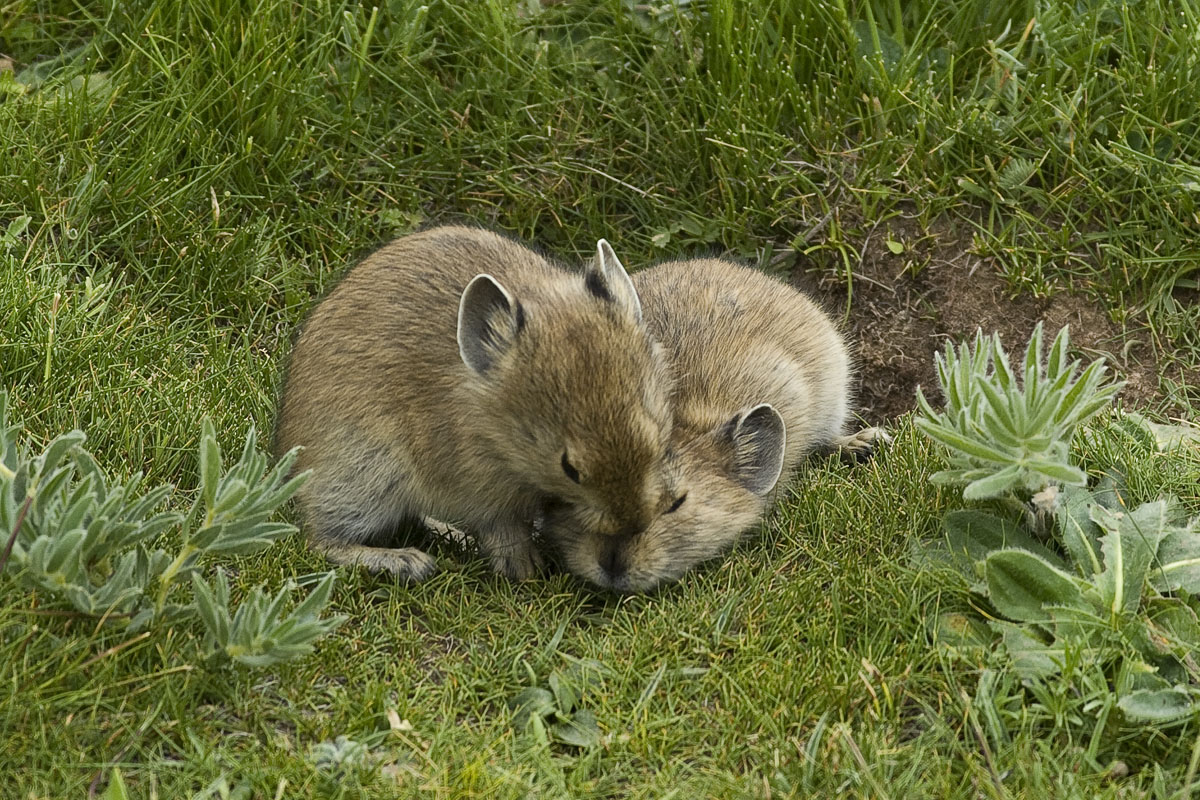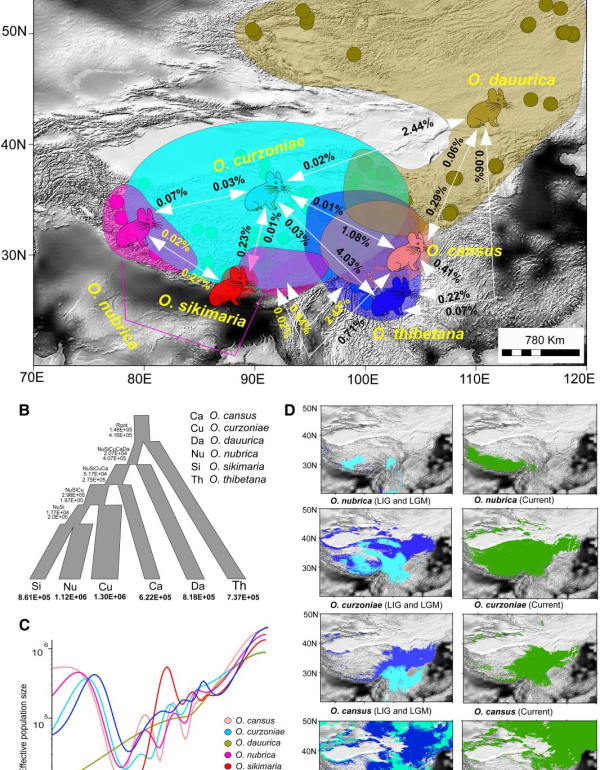
Six species of burrowing pikas (lagomorphs) inhabit the Tibetan Plateau and its surrounding areas. The species are very similar in appearance, but each of them occupies a special ecological niche. The landscapes preferred by the species are distributed in such a way that one of the species, the black-lipped pika, inhabits the entire plateau itself, while the remaining species have small habitats adjacent to it on different sides. Currently, the ranges of the species almost do not overlap.
In a work published in the journal Molecular Biology and Evolution by an international Chinese-Russian team of authors, including senior researcher at the Laboratory of Mammalian Microevolution, Ph.D. Lisovsky A.A., analyzed how the ranges of all six species could change during the climatic fluctuations of the Pleistocene. It turned out that these pikas are very sensitive to climate changes, and different phases of cooling and warming should have noticeably changed their ranges.
Genomic studies showed that all six species were involved in a process of interspecific hybridization, with different species interbreeding at different times. The process of hybridization is still underway in the southwest of the Tibetan plateau. Analysis of demographic curves and hybridization times suggested that for three species, gene transfer was beneficial and interrupted population declines caused by habitat restructuring as a result of climate change. It is curious that the black-lipped pika, which has always maintained a central position in its range, was the main source of transferred genes.

The very fact of interspecific hybridization was discovered in previous studies, based on the detection of foreign mitochondrial DNA in populations of several species. However, genomic studies have expanded the list of hybridizing species. Three more pairs of cases were found in which nuclear gene transfer was not accompanied by replacement of mitochondrial DNA.
It is assumed that hybridization had adaptive significance for the species involved. For example, the Daurian pika, mainly distributed on the low Mongolian plateau, as a result of hybridization was able to populate significantly higher territories adjacent to northeastern Tibet.
Ge D., Wen Z., Feijó A., Lissovsky A., Zhang W., Cheng J., Yan C., She H., Zhang D., Cheng Y., Lu L., Wu X., Mu D., Zhang Y., Xia L., Qu Y., Vogler A.P. & Yang Q. 2022. Genomic Consequences of and Demographic Response to Pervasive Hybridization over Time in Climate-sensitive Pikas // Molecular Biology and Evolution. Vol.40. No.1. P.msac274. https://doi.org/10.1093/molbev/msac274
